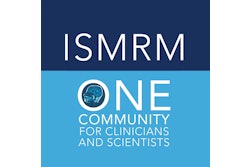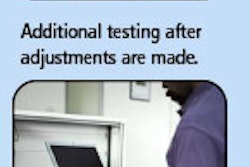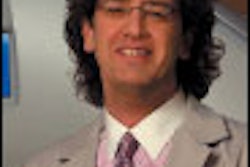MRI has long been medical imaging's glamour modality thanks to its noninvasive nature and the exquisite soft-tissue detail it provides. MRI will likely continue to occupy the spotlight in years to come thanks to a host of new clinical applications that are coming to fruition.
While many of these applications were confined to research centers in past years, they are now beginning to find their way into community hospitals and imaging centers. Powerful new systems and increasingly sophisticated software are making the protocols easier to use than ever.
The following describes several of the more promising applications, which include cardiac MRI, whole-body MRI, and breast MRI, with MR angiography (MRA) covered in the sidebar at left.
Cardiac MRI
The rise of multislice CT has drawn much of the attention away from MRI as a noninvasive alternative to cardiac cath for diagnostic applications. But MRI retains a number of advantages, and may one day assume the spotlight again, especially as concerns mount over the radiation dose being delivered by coronary CT angiography studies.
Best suited at 1.5-tesla magnet strength, MRI more than adequately depicts cardiac anatomy and function, valvular function, wall motion, and viability, and can also identify scars from prior infarctions or other kinds of scarring and abnormal enhancement.

"With CT, you only have one shot at (cardiac imaging). With MR, you have as many shots as you like."
-- Dr. Paul Finn, University of California, Los Angeles
Physicians at UCLA see many patients with congenital heart disease, most of whom have had surgical or percutaneous treatment, making their situation more complex. "With MRI, we can look at the integrity of the various types of surgical procedures and shunts that have been performed, using cine techniques without contrast," Finn said. "Even more powerfully, we can inject gadolinium and look at time-resolved imaging and get real-time, 3D pictures of how these shunts and vessels are structured."
While cardiac imaging can be performed on 3-tesla MRI systems, Finn believes that there are technical challenges with 3-tesla scanners. "At 3T we are more sensitive to so-called off-resonance factors," he added.
Adjustments can be made on a patient-by-patient basis, but not all clinicians want to take the time to manage the changes. Some aspects could be addressed with hardware by generating new types of radiofrequency (RF) transmitters for arrays, but Finn said that advance "is down the road."
In the years ahead, the prevalence of congenital heart disease in adults is expected to grow, giving MRI an increasingly critical role in cardiac imaging. Often in patients with congenital heart disease, CT becomes more difficult to interpret appropriately, because scanning time becomes complicated. "With CT, you only have one shot at it," Finn said. "With MR, you have as many shots as you like."
Functional MRI
Functional MRI (fMRI) has its roots as a brain mapping tool and has demonstrated much of its early value in research studies, such as showing the brain's response to external stimulus. By detecting a patient's brain response as he or she performs certain activities, fMRI helps researchers assess motor and language skills.
But fMRI is also showing potential as a clinical tool, with one early application being presurgical mapping. For example, functional MRI can be used to create surface-rendered views of the brain through an anatomical set of images, which essentially is the perspective a neurosurgeon will see when he or she performs a craniotomy.
"I project the activation area onto the surface of the brain, so I am showing the neurosurgeon what the brain will look like, plus the areas that are responsible for certain motor and language function," explained Dr. Neeraj Chepuri, a neuroradiologist and the radiology department chair at Abbott Northwestern Hospital in Minneapolis. "I also project the tumor to the surface of the brain, so they realize the relationship of the tumor to important areas of functional activation."
As an example, Chepuri cited the case of a woman in her late 50s who experienced frequent headaches and increasing weakness on the right side of her body. A CT scan found a tumor, and the neurosurgeon designed a treatment plan for Chepuri's review. He noted that the proposed path to the tumor might cross into the area of the patient's speech function.
That suspicion was confirmed with fMRI, and, using the new functional MR image as his guide, the neurosurgeon went 2 cm to the side of the speech activation area. The sizeable tumor was removed successfully and proved benign. Also, a small edema extended into the woman's language activation area, and she experienced some postoperative difficulty with speech. A follow-up MRI after surgery found that the edema also subsided, and the patient was back to full speech function three days after surgery.
"The fact that she had that language deficit transiently and there was some edema in that area tells me that (region) was very important for her language processing," Chepuri said. "If (the surgeon) had gone through there, it may have resulted in a permanent language deficit."
Chepuri believes that the future is now for fMRI as the modality can help map the area around brain tumors and provide a preoperative roadmap for physicians. The modality could have additional uses as well. "Other applications would be to apply fMRI to patients with memory loss, possibly to patients with Alzheimer's disease, and possibly in evaluating psychiatric and schizophrenic patients," he added.
Massachusetts General Hospital (MGH) in Boston is utilizing fMRI on pediatric patients to research and understand neonatal and child brain development, which plays a significant role in how brain circuits develop and function long-term. "I think much of that function, especially with genetic tests, is becoming more available for different disorders, identifying them early, and seeing how children develop differently in various genetic situations," said Dr. Ellen Grant, the head of pediatric radiology and the fMRI program at MGH. "I think those areas will become very big in the next five years."
As with many advanced MRI applications, there is debate over whether fMRI is best conducted at 1.5- or 3-tesla field strengths. While research data suggests that more is better, Dr. Bruce Rosen, the director of MGH's Athinoula A. Martinos Center for Biomedical Imaging, believes "we haven't yet turned the corner" on whether 3-tesla MRI definitively is better than 1.5-tesla scanning. "3T provides a level of robustness -- based on its improvement in signal-to-noise -- over 1.5T," he said. "Our preliminary experience at 7T suggests that it is likely to be even better."
Clinicians are learning that analysis, improvement in techniques that correct for motion artifacts, and better techniques to apply stimuli combine to improve MR studies at all field strengths, according to Rosen.
fMRI also provides a better option over CT when radiation exposure is a concern. While MGH opts for a CT perfusion study in stroke cases, Grant described the tactic as "an extreme situation for immediate therapy." CT perfusion would not be performed regularly for functional studies "because you have to interrogate the brain over time and the radiation dose becomes an issue," Rosen added.
Breast MRI
MRI also has become an increasingly influential adjunct to mammography and ultrasound in detecting breast cancer. First Hill Diagnostic Imaging in Seattle uses MRI and/or ultrasound to grade biopsies and stage its patients. The benefits are a shorter time to diagnosis and the ability to tailor the staging of the cancer to an individual patient. There also are economic ramifications as treatment costs escalate.

"As we go forward, it is appropriate for us to use these more complicated -- and, in some cases, more expensive -- tools, because we are talking about treatments that cost 100 times more than an MR breast exam."
-- Dr. Bruce A. Porter, First Hill Diagnostic Imaging, Seattle
While breast MRI is catching on, its utilization remains in its infancy, primarily because the exam is more complicated and time-consuming than, say, a routine MRI head image.
"Technically, breast MRI is the hardest type of radiology, because there is no anatomy," said Dr. Rebecca G. Stough, the director of imaging at the Women's Center at Mercy Health Center in Oklahoma City. "You have the nipple, the skin, and the lymph nodes. Everything else in between is specific for that woman only. That makes it frustrating and difficult to interpret."
The biggest challenge with breast MRI is the follow-up when a lesion is found. "After you have done (breast MRI) for a while, the number of enhancing nodules you have to follow up begins to decrease," Stough said. "We always have a mammogram and ultrasound available to problem-solve. That is why I think it is important that a breast radiologist read those, rather than just an MR specialist."
Another reason for the slow adoption of breast MRI is the perception of greater liability. "Whenever anyone thinks of breast imaging, they think of high liability, low reimbursement, and low prestige," Porter said. "With breast MRI, that is not so. This is a very unique and interesting exam; the reimbursement is very good."
While Porter and Stough believe mammography will remain the cornerstone of breast cancer diagnosis for the immediate future, they see MRI as a central component to breast cancer detection because it can provide more information than mammography and ultrasound, especially for more complex patients. The limiting factor, Stough believes, will be the lack of breast MRI specialists.
By Wayne Forrest
AuntMinnie.com staff writer
March 1, 2007
Copyright © 2007 AuntMinnie.com



















